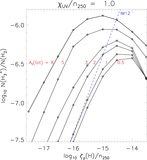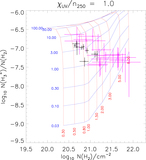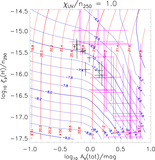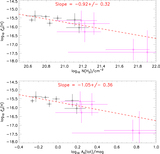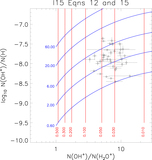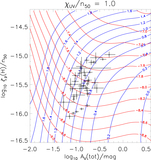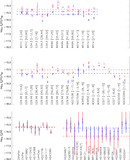Image Details
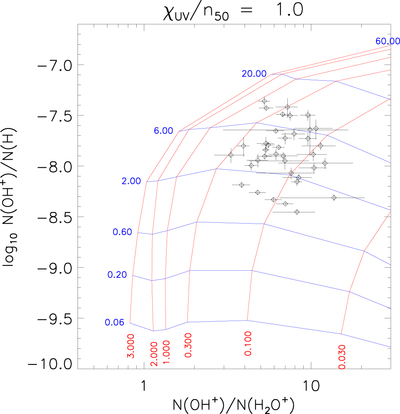
Caption: Figure 7.
﹩N({\mathrm{OH}}^{+})/N({{\rm{H}}}_{2}{{\rm{O}}}^{+})﹩ and ﹩N({\mathrm{OH}}^{+})/N({\rm{H}})﹩ column density ratios predicted for diffuse and translucent molecular clouds with ﹩{\chi }_{\mathrm{UV}}/{n}_{50}=1﹩, where ﹩{\chi }_{\mathrm{UV}}﹩ is the incident radiation field in Draine (1978) units and ﹩{n}_{{\rm{H}}}=50\,{n}_{50}\,{\mathrm{cm}}^{-3}﹩ is the density of H nuclei. Results are shown in the plane of ﹩N({\mathrm{OH}}^{+})/N({{\rm{H}}}_{2}{{\rm{O}}}^{+})﹩ and ﹩N({\mathrm{OH}}^{+})/N({\rm{H}})﹩, with contours of visual extinction, ﹩{A}_{{\rm{V}}}(\mathrm{tot})﹩, shown in red and contours of ﹩{\zeta }_{p}({\rm{H}})/{n}_{50}﹩ shown in blue (where ﹩{\zeta }_{p}({\rm{H}})\sim {\zeta }_{t}({{\rm{H}}}_{2})/2.3﹩ is the primary CRIR per H nucleus and ﹩{\zeta }_{t}({{\rm{H}}}_{2})﹩ is the total CRIR per H2 molecule).
Copyright and Terms & Conditions
© 2017. The American Astronomical Society. All rights reserved.



